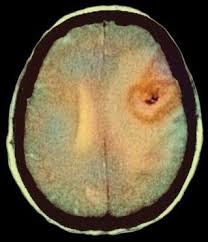Astrocytomas
- Jan 14
- 3 min read
Updated: May 9
Dr. Prem Pillay, Singapore
Senior Consultant Neurosurgeon with super specialty training in Neurosurgical Oncology
(Fellow at MD Anderson Cancer Center and Hospital, U of Texas, USA)

What Are Astrocytomas?

Astrocytomas are tumours that arise from astrocyte cells, which are part of the supportive (neuroepithelial) tissue of the brain.
These cells are named for their star-like shape. These are the most common primary CNS tumours, representing about half of brain and spinal cord tumours.
The most frequent types of astrocytoma, in increasing degrees of grade, are the pilocytic astrocytoma (grade I), astrocytoma (grade II), anaplastic astrocytoma (grade III), and glioblastoma multiforme (grade IV). If the tumour also contains oligodendroglioma and/or ependymoma cells, it is called a mixed glioma.
Low-Grade Astrocytoma

Pilocytic astrocytomas and subependymal giant cell astrocytomas are grade I tumours. These non-infiltrating tumours occasionally form cysts or are enclosed in a cyst. Metastasis or a secondary malignant tumour is rare. Although they are slow-growing, these tumours can become very large. Grade I tumours are often effectively treated by surgery alone.
Radiation therapy may be given for incompletely removed tumours. If the tumour recurs, reoperation and some form of radiation are options. Pilocytic astrocytomas occur mainly in children. They are the most benign of the astrocytomas. Cerebellar astrocytomas and optic tract gliomas are often pilocytic tumours.
Grade II tumours include low-grade astrocytoma, fibrillary or protoplasmic astrocytoma, and some pleomorphic xanthoastrocytomas. They are usually infiltrating tumours but grow relatively slowly.
A tumour’s location often determines its treatment. Complete surgical removal is sometimes possible for accessible tumours, although they can be locally invasive. If total surgical removal is thought to have been achieved, periodic follow-up with MRI or CT scans may be the only additional care required.
External beam whole brain radiation therapy is often used in addition to surgery (partial resection) or for inoperable low-grade astrocytomas. If necessary, Gamma Knife may be utilized as a boost to surgery and radiation where total removal of the tumour was not accomplished. European studies and our own experience have shown good results using implanted seeds of irradiation with permanent implants.
Again, stereotactic radiosurgery may be assessed as an alternative.
Anaplastic Astrocytoma

Anaplastic astrocytoma, sometimes called grade III malignant tumours, are tumours that grow more rapidly than low-grade tumours and tend to invade nearby healthy tissue. They recur more frequently and more quickly than some lower-grade tumours because their tendency to spread into surrounding tissue makes it difficult to completely remove them during surgery.
An anaplastic astrocytoma can be a recurrence from a lower grade of an already treated astrocytoma tumour.
Treatment recommendations for these types of tumours are based on the tumour’s location, if the tumour has spread, how far it has spread, and the patient’s general health and age. Surgery followed by conventional external beam radiation therapy is the primary treatment for accessible mid-grade astrocytomas. Boost radiation using interstitial or radiation seeds implanted directly into the tumour site has shown promising results in our experience.
Glioblastoma Multiforme
By definition, a glioblastoma Multiforme (GBM) tumour is considered a grade IV tumour. This high-grade astrocytoma group is represented by the glioblastoma multiforme and variants, the gliosarcoma and giant cell glioblastoma. A malignant astrocytoma that contains areas of dead tumour cells (necrosis) is called a glioblastoma multiforme.GBM represents about 30 percent of all primary brain tumours and about 50 percent of the astrocytomas. It is more common in older adults and it affects more men than women. Nine percent of childhood brain tumours are glioblastomas.
Because of its aggressive nature and fast-growing ability, the first symptoms are usually due to increased pressure in the brain. Headaches, seizures, memory loss, and behavioral changes are the most common presenting symptoms. The first procedure for most GBMs is either surgery to remove the tumour or a biopsy for diagnosis. Surgery alone rarely controls the GBM because of its aggressive nature whereby its cells quickly infiltrate throughout the brain. Thus, radiation therapy almost always follows surgery or biopsy to attempt to control the spread of the cells.
Conclusion
Astrocytomas, though complex, are manageable with the right diagnosis and treatment plan. If you or your loved one are experiencing symptoms that could indicate a brain tumour, consult a healthcare professional promptly for evaluation. Early intervention is crucial in improving outcomes and quality of life. For more information or to schedule a consultation, visit the Singapore Brain Spine Nerves Center today.



